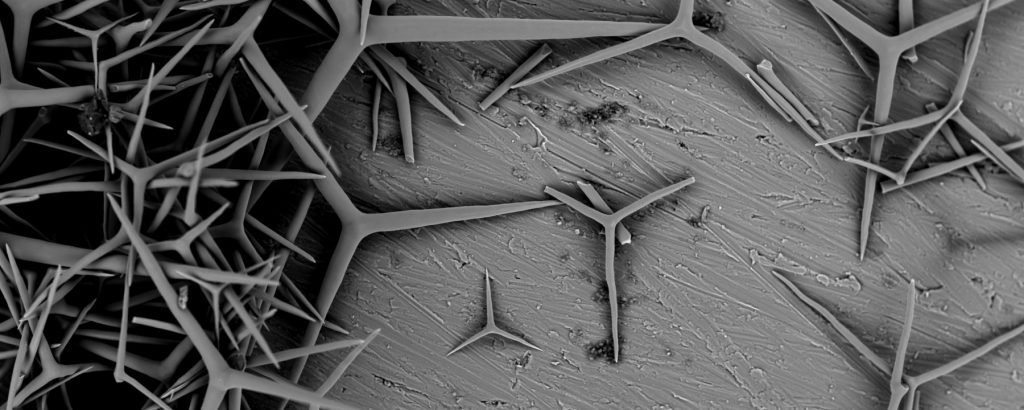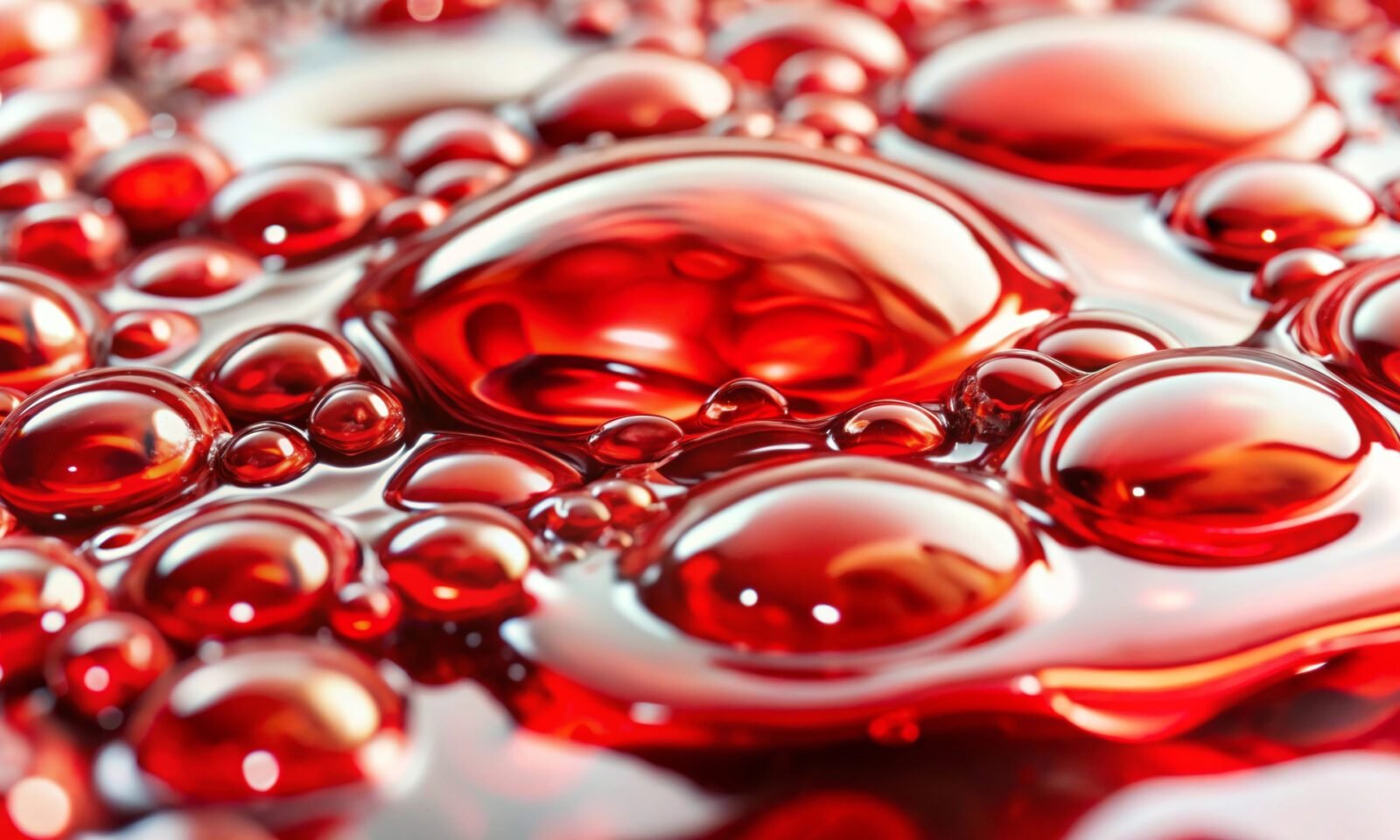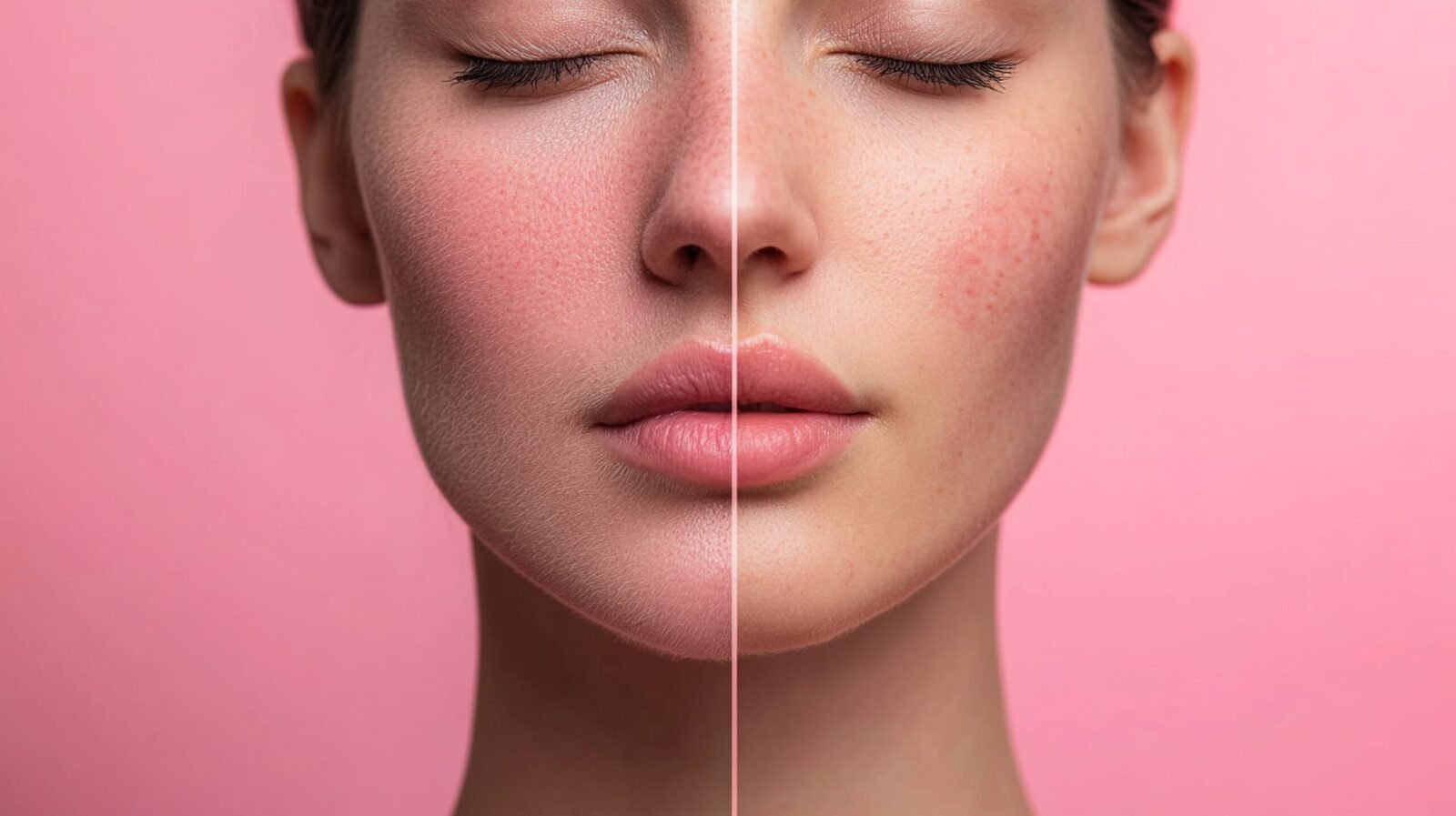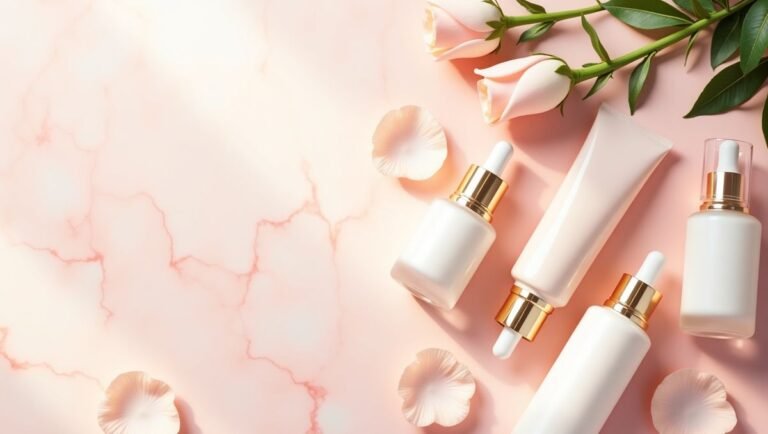Spicules, also known as marine micro-needles, are redefining the way cosmetics deliver active ingredients. These silica-based structures are obtained from marine sponges and are sharp enough to create micro-channels in the stratum corneum without causing long-term damage (PMC).
Unlike traditional microneedling, spicules can be incorporated into topical products such as creams, serums, or gels. As a result, they offer a non-invasive method to enhance the absorption of actives. In addition, spicules stimulate microcirculation and collagen synthesis, giving them anti-aging and skin-regenerating potential. Research also shows that spicules can remain in the skin for hours, which provides sustained penetration benefits (ACS Publications).
Consequently, spicules have become a bridge between cosmetics and medical aesthetics. Moreover, their proven ability to enhance the delivery of peptides, hyaluronic acid, flavonoids, and growth factors positions them as a breakthrough in next-generation dermocosmetics. Overall, this makes spicules one of the most promising delivery technologies of the decade.
What Are Spicules?
- Origin: Derived from marine sponges.
- Composition: Primarily biogenic silica.
- Size: Typically 50–400 µm long, depending on species.
- Function: Temporary penetration of the skin barrier for enhanced delivery.
In other words, they act as a natural microneedling system that can be formulated directly into cosmetic products.
How Spicules Work
- Barrier Disruption
Spicules create thousands of microscopic channels in the stratum corneum. As a result, hydrophilic and macromolecular actives can bypass the barrier more easily. - Sustained Delivery
Spicules often remain partially embedded in the skin for up to 72 hours. Therefore, they extend the absorption window for active ingredients (ACS Publications). In other words, formulators gain a longer timeframe to deliver efficacy. - Geometry and Efficacy
Research shows that spicule shape and aspect ratio strongly influence how well they enhance skin penetration. For example, longer and sharper spicules improve results (PubMed). - Synergy with Carriers
Combining spicules with liposomes or nanocarriers further improves delivery. In fact, flexible liposomes boosted hyaluronic acid penetration nearly 19-fold when used with spicules (RSC).
Key Research Results
| Study | Model / Actives | Findings / Metrics | Notes |
|---|---|---|---|
| Skin Delivery of Hydrophilic Biomacromolecules Using Marine Sponge Spicules | Fluorescein-dextran (10 kDa, etc.) | ~33× increase in FD-10 penetration in vitro; in vivo, spicule + delivery showed up to ~72× vs PBS and ~15× vs dermaroller. PubMed | Demonstrates strong enhancement vs traditional microneedling. |
| Enhanced Skin Delivery of Therapeutic Peptides Using Spicule-Based Topical Delivery Systems | Insulin (hydrophilic) & Cyclosporine A (hydrophobic) | Insulin flux increased to ~457 ng/cm²/h vs ~5 ng/cm²/h passive. PubMed | Showed correlation between spicule shape and delivery. |
| A Novel Dermal Delivery System Using Natural Spicules for Cosmetics | Pectolinarin (flavonoid) | Spicules (~250 µm × ~12 µm) improved penetration in porcine skin via fluorescence. PubMed | Excellent reference for cosmetic formulations. |
| The Effect of Micro-Spicule Containing EGF (MS-EGF) | EGF + spicules | Clinical study showed wrinkle reduction and safety for periocular skin. PMC | Useful for clinical/cosmetic link. |
| Topical Sphistin12-38 + Spicules | Antimicrobial peptide | Penetration increased ~6.1× vs peptide alone; 100% cure rate in rabbit ear acne model within 2 weeks. PubMed | Highlights therapeutic potential for acne care. |
Together, these studies clearly demonstrate that spicules can enhance penetration for a wide range of actives. For instance, improvements have been observed in peptides, growth factors, flavonoids, and even antimicrobial agents.
Benefits for Cosmetics
- Non-invasive and needle-free alternative to microneedling
- Boosts absorption of both hydrophilic and hydrophobic actives
- Stimulates collagen and supports anti-aging activity
- Enhances brightening and skin-renewal outcomes
- Provides a functional “tingling” sensation often perceived as proof of efficacy
Furthermore, the diversity of applications—from anti-aging to acne care—makes spicules highly versatile. As a result, they represent a unique opportunity for brands that want to deliver both science and sensory appeal.
Challenges to Address
- Skin tolerance: Overuse or high concentrations can cause irritation (PubMed).
- Standardization: Size, morphology, and dose must be controlled.
- Formulation: Even dispersion is necessary to avoid aggregation.
- Regulation: Transparency and safety data are essential for approval.
Nevertheless, careful optimization ensures that spicules remain safe and effective in cosmetic applications. In conclusion, strong formulation science is the key to balancing efficacy and skin tolerance.
Future Outlook
Spicules represent one of the most innovative delivery enhancers in modern skincare. Their ability to combine natural marine origin, mechanical stimulation, and improved active transport makes them a premium choice for advanced formulations. In summary, spicules are set to integrate with encapsulation systems, peptides, and growth factors—pushing the boundaries of cosmetic efficacy.
Spicules act as nature’s micro-needles, enhancing delivery and stimulating skin renewal. They not only improve penetration but also trigger collagen production for firmer, smoother skin. To learn more about our advanced marine-derived option, visit our Marine Spicule Skincare Ingredient







